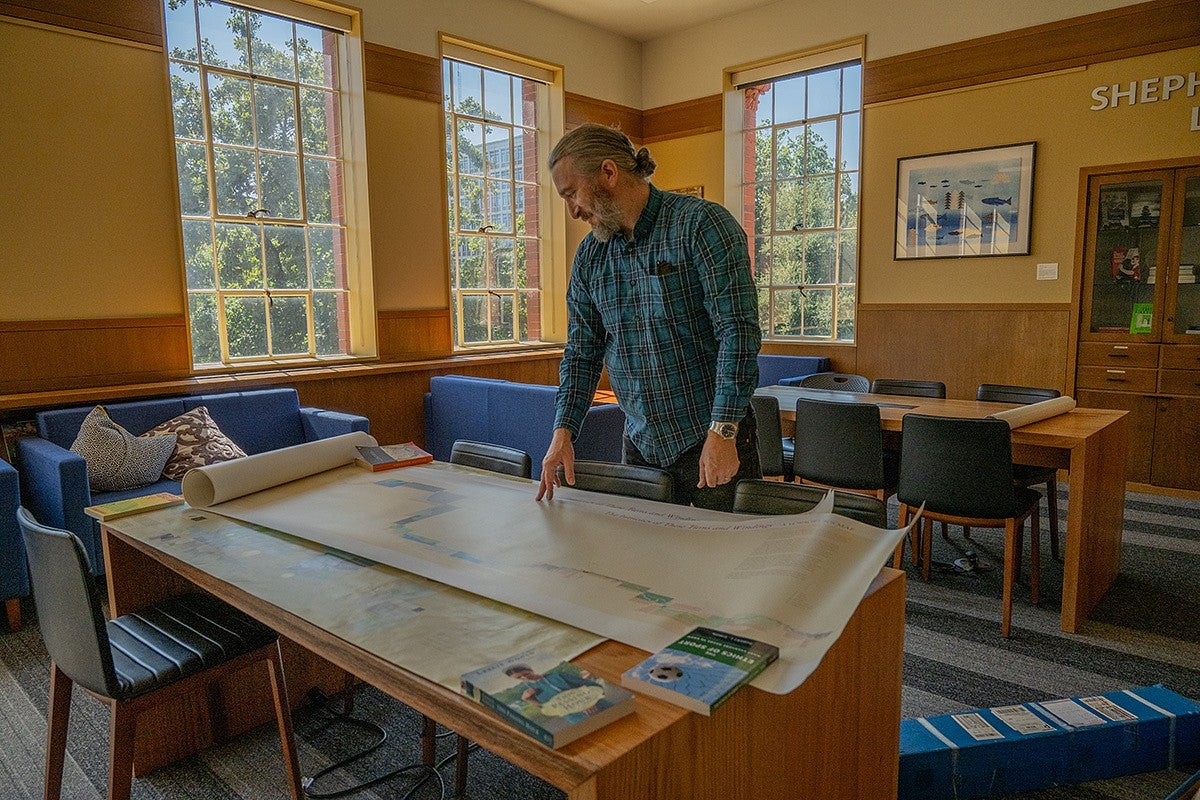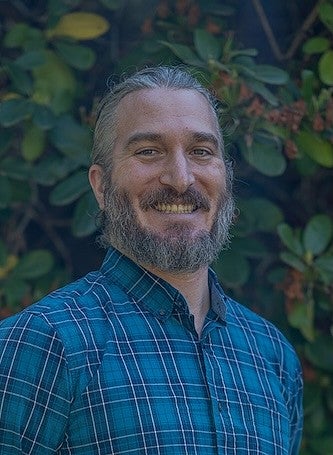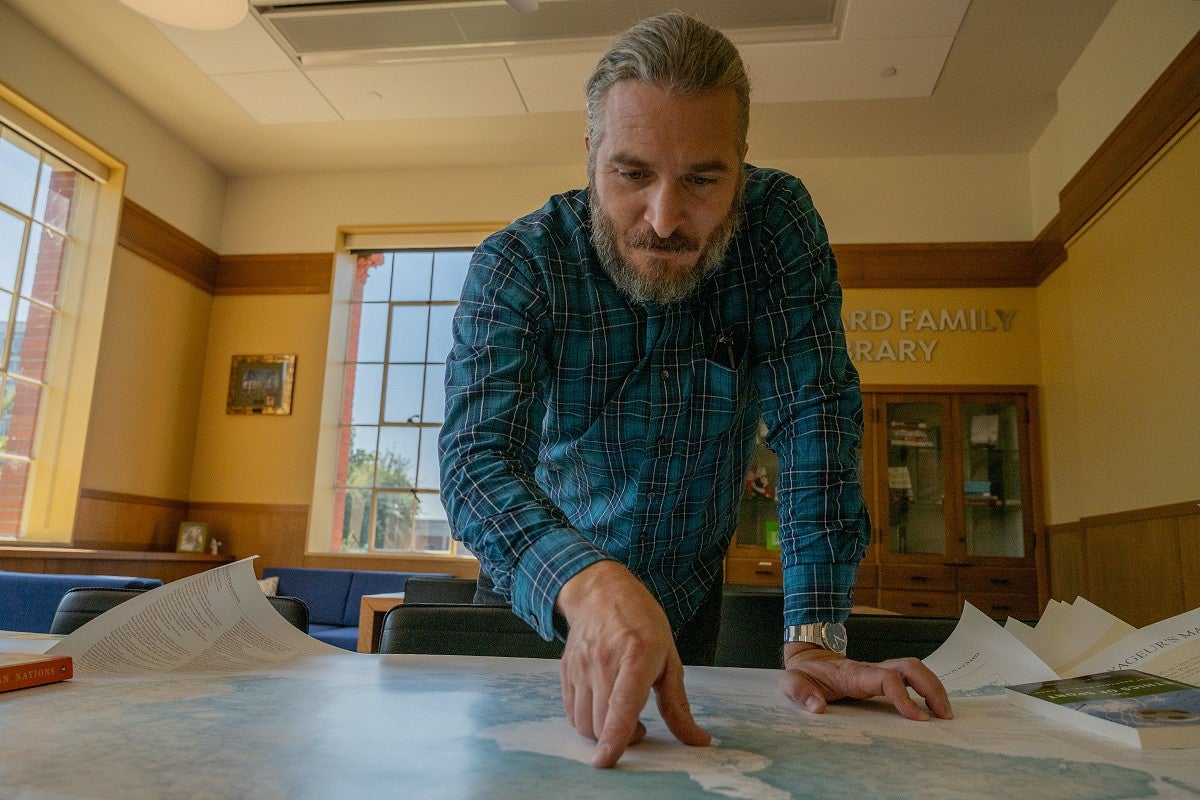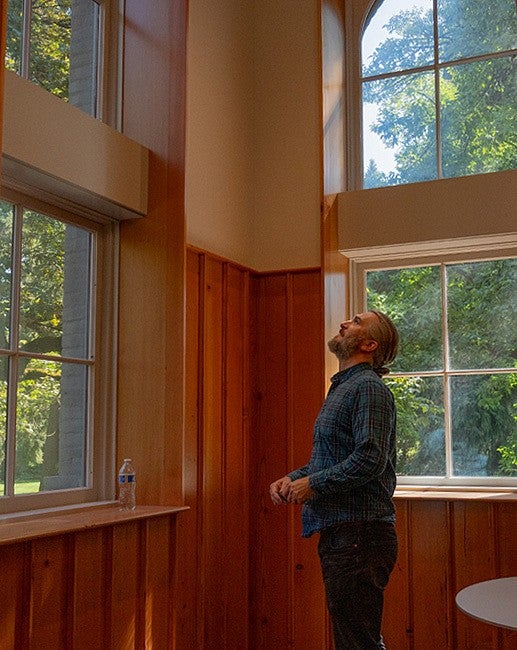
Reading from the ground up

CHC classes: HC 101H Identity Documents; HC 221H Writing Crime on the Border; HC 221H Exploration and Media, or Explore-Encounter-Exploit; HC 301H Stories and Maps; HC 421H Textualities of Air Travel; HC 477H Thesis Prospectus
Hometown: Southampton, Massachusetts, but I’ve lived in New York City, San Diego and Austin, Texas
Song on Repeat: “Perpetuum Mobile” by Penguin Cafe Orchestra
Guilty Pleasure: Watching the original Perry Mason. Also, eating a really good cheeseburger.
What's in the fridge: Always a bottle of Champagne.
Favorite Movie: William Wyler, The Best Years of Our Lives; Stanley Kubrick, Barry Lyndon; and Fernanda Valadez, Sin Señas Particulares.
Coffee or Tea: Espresso
Why I teach at the CHC: Because I believe in the power of a liberal arts education. As author Rolando Hinojosa said, “A liberal arts major can do anything.” I’m excited to be able to work through ideas with enthusiastic students in small seminars.
If you take my class, you will: Be asked to consider how knowledge can transform your ability to care for each other; become excited about etymology and never taking words for granted.
I’m a stickler for: Media-specific, material-specific, culturally- and historically-contextualized analysis.
For Marcel Brousseau, life has always been lived across borders. Growing up in New England, his family would take summer trips north to Canada to visit relatives in Quebec. That early sense of extended kinship has influenced how he sees political borders today.
“I never really put it all together until years later that a lot of my interest in something like border studies probably goes back to that,” Brousseau says.
These and other formative experiences with transnational identity inspired in Brousseau a scholarly pursuit to map the many ways in which borders try, and sometimes fail, to define our lives.
One of the newest members of the Clark Honors College core faculty, Brousseau is deeply immersed in the texts, landscapes, multimedia and material traces of migration, citizenship, border zones and indigeneity. Encountering these traces has led him from New York to California to Texas and eventually to Oregon. Along the way, he’s researched and taught comparative literature, Latinx studies, comics studies, and critical cartography, to name a few.
Brousseau has become a vessel for interdisciplinary knowledge that he is eager to pass along in courses such as HC 101: Identity Documents and HC 221: Writing Crime on the Border. In a liberal arts environment like the CHC, students’ minds are constantly making connections and thinking in new ways that lend themselves to inclusive learning, and that’s what excites Brousseau.
“These students will be taking courses in so many different areas and trying to bring those things together, and I can also have the freedom to teach broadly,” he says.
Brousseau grew up in bucolic western Massachusetts, between the rusty sprawl of Springfield and the cultural shire of Northampton. His mother taught high school social studies before going to work for the teachers’ union and he remembers loving school.
“Everything interested me,” he says, but particularly, writing and the arts. His Quebecois grandfather, a draftsman, encouraged him to pursue architecture when he saw him drawing buildings. Instead, Brousseau wanted to explore the humanities—though buildings would pop up again much later in life.
By the time he was finishing public high school, Brousseau was thirsty for new experiences and a different pace of life. He did his last year at community college, where he could sample interests like painting, acting and writing songs, stories and poetry. Then he chose a college in New York City. Tucked into Greenwich Village, the Eugene Lang College of Liberal Arts at The New School offered the rich academic and urban environment Brousseau was craving.
Despite his enthrallment with learning, Brousseau was uncertain he was cut out for student life. The city felt full of possibility, and he left college after a year. He traveled, worked, and eventually, found himself back in New York.
He was ready to give school another try, but this time he had a new outlook. At SUNY Purchase, being a student cost just $2,500 a semester. Paying for school himself with barely any loans gave him a new, important sense of ownership.
“Education is a social necessity and a public right, but I think it’s something that as individuals we have to develop our own relationship with,” Brousseau says. “It wasn’t until I did that as a college student that I started to understand what it meant.”
Despite having only taken one class in creative writing, he declared it as his major at Purchase.
“Perhaps to my credit, I wasn’t career-minded,” says Brousseau. “I wanted to see what happened, see if I could engage in this artistic pursuit. I was trying to do what I wanted and make it meaningful for me.”
After Brousseau graduated, he worked for a small company editing and eventually writing nonfiction books. Researching and continuing to read widely got him interested in graduate school, and a specific focus was emerging.
Brousseau worked through college part-time in hardware stores where he encountered lots of different people in the trades, many of whom were immigrants.
“It made me really interested in the politics of immigration, the lives and stories of immigrant people, and that stuck with me,” he says.
For a class called Anthropology of Poverty, he interviewed community members he’d met. One was an Irishman who owned a painting company.
“He was really successful in a lot of ways,” says Brousseau. Because he spoke English, life here was easier for him. But the man also felt trapped between worlds.
“He told me, ‘Someday, I want to go back. I think we all do.’ He was pretty sure this was a common feeling among immigrants,” Brousseau recalls. “Nations aren’t really set up for circular migration. We don’t make it easy for people to move back and forth...I think he was anxious about the idea. What would it be like? Would it be comfortable there anymore?”
This paradox intrigued Brousseau and reminded him of how his own grandfather had remained a son of Canada. According to Brousseau's father, anytime a major news story happened in Canada, his grandpa would declare, “I’m going there,” get in his car, and drive up. “There was this sense of attachment that never really goes away,” Brousseau says.

In his reading, Brousseau noticed parallel themes of young men leaving home for a better life and returning as strangers in their native lands. The theme showed up across cultures and nations.
Fascinated by the ways in which identity is made and complicated by place and nation, Brousseau felt drawn to study the U.S. southern border and the people living around and across it. The field of comparative literature was the ideal vehicle in which to do so because it wouldn’t limit him to just the English literature canon.
He wanted to be close enough to the border where he could feel the pulse of the region. This led him to enter a master’s, then a Ph.D. program in comparative literature at University of California-Santa Barbara.
Upon finishing his dissertation, he had the opportunity to join the faculty of the University of Texas, Austin’s Center for Mexican American Studies on the invitation of the center’s director at the time, Domino Perez.

“Blown away” is how Perez describes her first encounter with graduate student Brousseau while on a literature conference panel. She was impressed with his novel approach to mapping and what maps tell us, and how he held his own with more senior colleagues. She encouraged him to apply to the center’s postdoctoral fellowship, which was eventually extended for a second year on the strength of his teaching.
“Students absolutely loved Dr. Brousseau, coalesced around him,” Perez says. She describes encountering a pack of students in the center one day, obviously searching for someone. “Can I help you?” Perez asked the group of Latino students who were likely first generation, who told her they were looking for their professor. When she asked who, they replied, “Our Dr. Brousseau.”
“This idea of claiming him, ownership of him, affinity with him, has always stayed with me,” says Perez. “It told me a lot about how he is in the classroom.”
The center was a unique place to begin his professional career, Brousseau says, because of the full spectrum of disciplines present there, with every researcher dedicated to the study of Latinx lives. The classes he brings to the CHC are based on what he taught there.
Though Brousseau is not Latinx, he says the center’s scholars made room for him and gave him a mandate. “You’re here,” they told him, “because you represent somebody from a different cultural history who can model ethical engagement.”
He saw this as an amazing invitation. Brousseau believes that members of a democratic society should take an interest in and responsibility for the history of others in addition to their own. History, he says, is deeply present in the physical places where people lived. At the border in San Diego and Tijuana, he observed a concrete circle in the ground spanning both sides of the fence where an international park once existed for people to pass back and forth in shared space.
“The entire landscape has changed, but they've never jack-hammered that circle out of the ground, right?” he says. “You can see all these traces of the past in place, and that's another thing that influences my teaching. Can we get out of the classroom sometimes? Can we engage with place as a text?”

While in Texas, Brousseau became fascinated with the Houston Astrodome. The mammoth, air-conditioned sports arena was a first of its kind in 1965 and remains a cultural symbol long after the Astros stopped playing baseball there 26 years ago. Studying it in-depth led him into historic preservation, and Brousseau is now writing a master’s thesis on the Astrodome for a degree in the field here at UO.
Being a perpetual student has made Brousseau a better teacher. He values professors who are organized and clear, but also who show dedication on a deeper level. One of his own goals as an assistant teaching professor at the CHC is to think about knowledge as a means for care.
“I always think about care in two ways, both as sort of having a sense of emotional responsibility, but also care as in rigor.” Brousseau says. “When we do things with care, we do them precisely, we do them thoughtfully.”
Joy is also present in Brousseau’s teaching, according to Kelly Connor, a former student at Portland State University who took his graduate seminars on maps and air travel. Connor says the atmosphere in Brousseau’s classroom was always collegial.
“Because he shared resources, materials and ideas that were important to his own research, it felt like he trusted and respected students,” Connor says. “This naturally affects the quality of discussions in class. Students feel free to contribute and build on each other's ideas.”
At the CHC, Brousseau wants to encourage students not to take the liberal arts environment for granted, but to relish the way it lets them apply ideas in different modalities. He draws on his own delight when, as a new undergraduate student, he could take classes in anthropology, child development, and creative writing all at once.
“What a strange and amazing panoply of subjects that is,” Brousseau says, “and every one of them allowed me to think in different ways.”
